Social Innovation Labs
Communities can apply the social innovation lab model to a wide range of social problems.
A social innovation lab is a collaborative approach to solving complex social problems that involves bringing together a diverse group of stakeholders to identify and address the root causes of a specific issue. These labs use a range of tools and methods to develop and implement innovative solutions to social challenges, and are often designed to be adaptable and scalable to other communities facing similar issues. The goal of a social innovation lab is to create sustainable, community-driven change that improves the lives of those affected by the social problem being addressed.
Communities can apply the social innovation lab model to a wide range of social problems across Georgia. We developed the following best practices based on our experience with the Homelessness Intervention Project in Clayton County, which Georgia Appleseed founded and helps facilitate.
- Recruit members who can commit resources (tangible and intangible) to support the development, implementation, and evaluation of policy experiments (or interventions) related to the lab’s focus. Emphasize diversity (across sectors and demographics). In addition, either include as members individuals directly impacted by the lab’s focus or develop formal mechanisms for engaging them to inform the lab’s work and evaluate its impact.
- Adopt a focus early in the life of the lab (e.g., reduce homelessness among children) and in coordination with founding lab members.
- Commit to at least a year of participation. Participants should agree to attend lab meetings or send representatives for at least a year. Regular attendance fosters personal relationships, knowledge sharing among members, and gathers resources that members rely upon for policy experiments. In addition, a participation commitment helps the lab weather the unexpected, e.g., the COVID-19 pandemic.
- Engage members in shared learning experiences related to the lab’s focus, proposed policy experiments, evaluation techniques, and other relevant topics. For example, lab members can read the same books or studies and discuss them, take educational trips together, educate each other about their experience, offer expertise relevant to the lab’s focus, and bring in outside speakers.
- Build and implement policy experiments and do not be afraid of failure. Lab members should look at projects large and small that can impact the lab’s focus. That focus is likely a multi-faceted, complex social problem caused by a variety of social challenges. Lab members should look at multi-faceted solutions. The lab should seek to reach out to diverse community stakeholders (particularly those directly impacted by the lab’s focus and experiments) for feedback at various stages in experiment planning and evaluation. Incorporating this feedback loop will help experiments achieve the lab’s goals, reduce unintended harm, and help interpret results.
- Emphasize sophisticated evaluation and learn from experience to create better policy experiments. Recruit members who can bring evaluation expertise, like local university faculty, or engage outside assistance to implement timely and useful evaluation, analysis, and feedback. Emphasize diverse viewpoints in the evaluation process, and include viewpoints of stakeholders directly impacted by the lab’s focus and experiments. Lab members should use what they learn from the success and failures of experiments to improve future outcomes.
- A “backbone organization” should support the lab with staff who create and maintain meeting schedules, facilitate meetings if appropriate, produce agendas and notes, and coordinate information sharing among lab members.
- Listen and then listen some more. Listening allows for asset sharing, idea creation, planning, relationship building and much more.
- Employ patience as a tactic and a resource. Quality experiments take time to develop, especially if you intend to evaluate your impact.

Related Resources and Links

